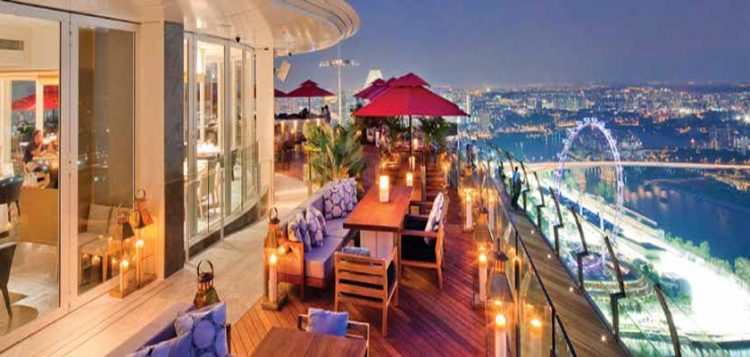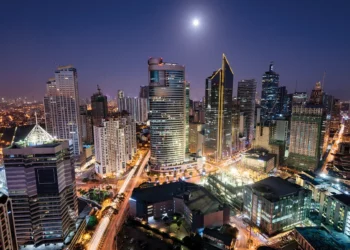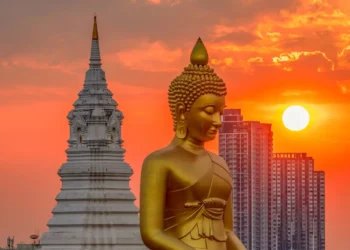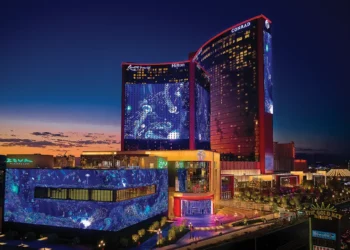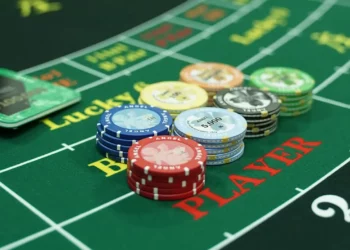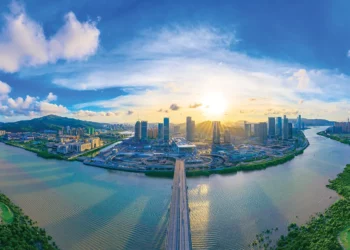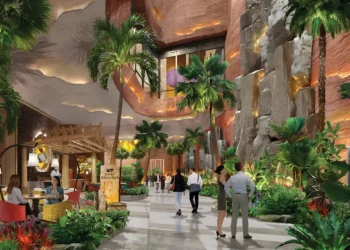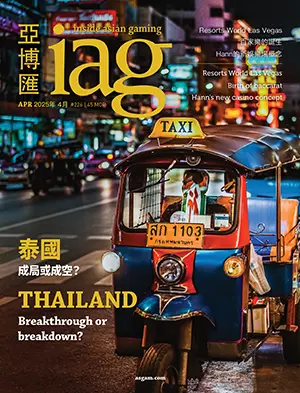Marina Bay Sands and Resorts World Sentosa are two very different gaming resorts with one thing in common — they make a whole lot of money away from the games
Singapore’s two megaresorts have turned necessity into virtue, quite profitable virtue. Having to contend with statutory restrictions on casino floor size and gaming marketing and promotion, a virtual ban on junkets and an admissions tax on local residents, Resorts World Sentosa and Marina Bay Sands rely on non-gaming as a key revenue driver. Last year, it exceeded a combined US$1.3 billion, or 24.5% of total revenue. By contrast, Macau’s non-gaming revenue hovers in the mid-single digits.
“Singapore’s foray into casino gaming was always driven by a tourism and an economic growth agenda,” Global Market Advisors partner Jonathan Galaviz says. “Casino gaming was a means to an end. In that respect, non-casino revenues were always an interest to the government.”
Singapore even coined the term “integrated resort” to represent the type of casino property it wanted.
Mary Mendoza, managing director of The PLATiNUM, a gaming-focused marketing consultancy, says, “The business units are each important in operating their roles, be it a headcount driver from entertainment, convention, retail and F&B, a revenue booster from gaming, or as a brand advocate for a healthy long-term market credibility from entertainment and retail. Therefore, each business unit supplies a certain value.”
She adds that this “is not something new,” noting that it has been used in Las Vegas for more than two decades. In fact, Mr Galaviz calls it the “Las Vegas model,” and says that as a consultant to the Singapore government he advocated its adoption in the Lion City.
Singapore’s IRs don’t come close to Las Vegas’ 60% of revenue from nongaming activities, but then their operating environments are quite distinct. “Financially, in high population/visitor venues with oligopolistic competitive conditions that lead to high gaming revenues, it is simply mathematically difficult for non-gaming to contribute more than 50% of the total revenue, and ratios in the 10% to 30% range are more likely,” says industry consultant Dean Macomber, president of Macomber International. “Few other activities can generate the amount of revenue gaming is able to generate within a practical amount of space.”
ONE MODEL, TWO RESORTS
The Las Vegas model has produced two very different-style resorts in Singapore. Marina Bay Sands, developed by Las Vegas Sands on the fringe of the city’s downtown, adds an architectural icon to the skyline with three 55-story hotel towers linked by a rooftop SkyPark, one of the city’s top five attractions for visitors, according to a 2013 Singapore Tourism Board survey. The property has created the template for a modern urban megaresort with vast shopping and dining choices, huge convention facilities, two nightclubs, two theaters and a museum, all of them revenue-producing.
Located on Sentosa, Singapore’s designated leisure island, Resorts World Sentosa has more features in common with family vacation destinations, highlighted by the only Universal Studios theme park in Southeast Asia—also a Top 5 attraction in STB’s survey—plus a water park and one of the world’s largest aquariums. The Genting Group resort, operated by SGX-listed Genting Singapore, has six boutique styles of accommodation, ranging from Festive Hotel’s family-friendly loft beds to Beach Villas’ luxurious treetop lofts hidden in lush greenery, and features an ESPA spa, MICE facilities, dining and luxury retail.
With their divergent locations and diverse offerings, the two resorts deliver different financial results. Last year, Marina Bay Sands had US$3.16 billion in revenue, $2.36 billion from gaming and $804.7 million from non-gaming, or 25% of total revenue, with EBITDA of $1.38 billion, which works out to a margin of 46.6%. Resorts World Sentosa, which reports in Singapore dollars (converted to US dollars at current rates throughout unless otherwise indicated), had total revenue of $2.25 billion, gaming revenue of $1.73 billion and non-gaming revenue of $523.3 million, 23.2% of its total revenue, with EBITDA of $929.6 million equating to a similarly enviable margin of 41.2%. In the first half of this year, MBS nongaming revenue grew 6.3% to $415.5 million, 23.8% of total revenue. RWS non-gaming revenue grew 1% to $245.6 million, including a 3% decline in the second quarter, the first such fall in the property’s history.
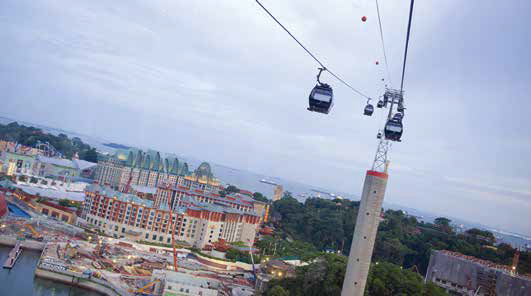
Comparing the results head to head, in 2013, RWS raked in 71% of the total revenue of MBS, 73% of its gaming revenue, 65% of its non-gaming revenue and 67% of its EBITDA. For the first half of this year, RWS registered 76% of the total revenue of MBS, 82% of its gaming revenue, 59% of its nongaming revenue and 66% of its EBITDA. In each period, the biggest difference between the two properties, in percentage terms, was on the non-gaming side.
A closer look at their operations helps explain the gaps.
Hotels are the key to non-gaming revenue at both resorts. “One of Singapore’s objectives in allowing the IRs to be built was that they would increase hotel capacity for the country,” Mr Galaviz notes. Combined they have added nearly 4,100 rooms to the city’s inventory.
In the first half of this year, MBS reported US$190.2 million in room revenue, 46% of its total non-gaming revenue. Occupancy was 99.2% at an average daily rate of $418, up 10.3% from 2013, for revenue per available room of $415. With those numbers, it’s no surprise that LVS wants to add 1,500 more rooms. In March, LVS Chairman and CEO Sheldon Adelson traveled to Singapore to request land adjacent to MBS for the project from the government. “We need more rooms,” he told reporters. “We are running at 100% occupancy; on a bad day it’s 98%. No other hotel in the world runs like this except some in Vegas.” But during its secondquarter earnings call, LVS said the request for more land is unlikely to be granted.
Resorts World Sentosa doesn’t produce nearly as much hotel revenue as MBS. In the second quarter, occupancy ran at 94% with an average room rate of S$390 (US$309), and in the first quarter at 92% occupancy with an ADR of S$409, a total of $81.2 million in first-half room revenue, which amounted to 33.1% of the resort’s nongaming revenue. Over the past three years, hotel RevPAR has grown at a compound annual growth rate of 14%. Still, RWS’ firsthalf hotel revenue was $109 million less than that of MBS, accounting for 64% of the difference in non-gaming revenue between the two properties. One issue is size: RWS has 1,524 rooms, MBS has 2,561. But price also matters: RWS has 59.5% as many rooms as MBS, but it brought in just 42.7% as much in room revenue.
Genting Singapore is attempting to narrow the gap with a new 550-room hotel in the Jurong Lake district, an area outside central Singapore that the government has targeted for development. “With our hotel being the first to open in this growing precinct, we hope to create another unique hospitality product that will crank up the buzz meter in this already vibrant area to even higher levels,” Genting Group Chairman Lim Kok Thay said at the groundbreaking in July last year.
Morgan Stanley Asia analysts Praveen Choudhary and Xin Jin Ling expect the Jurong hotel, slated to open in May next year, to boost the bottom line for RWS and Genting Singapore. In a report issued last month, the analysts estimate that with an ADR of S$170, 80% occupancy and 50% of occupants mass-market players, the hotel could boost mass visitation, revenue and EBITDA each by 5%.
FORKING IT OVER
The table is more level for MBS and RWS when it comes to F&B. Each resort boasts five celebrity chefs, with French chef Joel Robuchon leading the charge with two restaurants at RWS and fusion star Tetsuya Wakuda carrying the banner for MBS, which has announced plans for Gordon Ramsay, star of television’s “Hell’s Kitchen” and “MasterChef US,” to open a branch of his casual dining Bread Street Kitchen there. Each IR has more than 60 F&B outlets, everything from fine dining to fast food. MBS reported F&B revenue of $92.7 million in the first half, down fractionally from a year earlier, representing 22.4% of its total non-gaming revenue. RWS doesn’t break out those and other non-gaming numbers, but given the comparable range and number of outlets, it’s likely the results are close.
In retail, MBS has the decided advantage. The 800,000-square-foot Shoppes at Marina Bay Sands boasts more than 300 outlets and revenue in excess of US$150 million annually at high profit margins. By contrast, RWS has just 31 shops in its retail area, plus souvenir outlets at its various attractions, and delivers perhaps one-tenth of the mall revenue. But location likely influenced that development choice. Last year, the resort joined public- and private-sector interests on Sentosa to form the Sentosa HarbourFront Business Association to promote the island. HarbourFront features more than 1 million square feet of retailing at VivoCity, Singapore’s largest mall, and at the HarbourFront Centre, and it includes the city’s largest nightlife center, Saint James Power Station, with six distinct venues. RWS has no nightclubs— in the early stages of development it tried to lure Saint James impresario Dennis Foo there—but it now designates Saint James as its club hub.
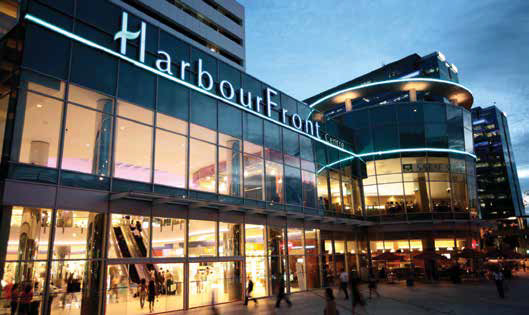
Digging deeper into the retail at MBS, first-half revenue was $78.8 million, up 8.6% from a year earlier and comprising 19% of total non-gaming revenue. Mall occupancy was 89.5%, held back by about 44,000 square feet undergoing a “new fit-out as part of an ongoing repositioning of the mall that will bring in several new key luxury tenants,” LVS writes in its quarterly US earnings filing. In 2013, the occupancy figure was 86.7% with 56,000 square feet undergoing renovation. Rents of US$220 per leasable square foot, up 0.5% from a year earlier, plus about $72 in mall charges, are comparable to those of Singapore’s so-called suburban malls, but below the $329 per square foot commanded in the prime Orchard Road shopping district. Sales per square foot fell 3.5% to $1,497, reflecting a downtrend throughout Singapore. After operating expenses, taxes and provisions for unpaid rent, the business generated for MBS a profit of $60 million at a juicy 76.2% margin.
Total Hospitality Group CEO David Chernov, who worked on the openings of brand-name nightclubs Avalon and Pangaea at MBS, says luxury brands permeate the mall and the entire resort. “Marina Bay Sands has teamed up with some of the world’s top brands and eating from the world’s best chefs,” he observes. While brands dominate the luxury market throughout Asia, Mr Chernov believes, “It’s more so in Singapore due to the wealth they’ve accumulated.”
Indeed, Singapore has more US dollar millionaires per capita than anywhere in the world, an estimated 15% of the population. Although the IRs are supposed to be touristfocused, there’s no doubt that local patronage plays a big part in both the gaming and non- gaming revenue picture and is a factor in enabling them to deliver the highest EBITDA margins in the industry—52% at MBS in the first half of this year, 45.7% at RWS.
Replicating those margins elsewhere may be impossible. As Mr Macomber notes, “There are only a finite number of Singaporelike markets and even fewer that are unserved by casino gaming.”
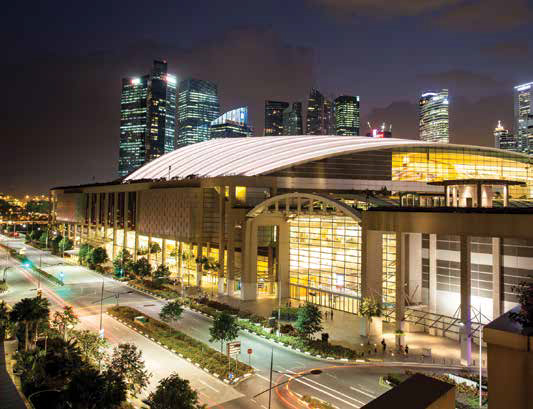
BETTER MICE TRAPS
Singapore also seems to be advantaged for meetings and conventions as an international air travel hub and regional corporate and financial center. First-half MICE revenue at Marina Bay Sands was $53.8 million, down 0.4% from a year earlier but representing 12.9% of all non-gaming revenue. MBS, working closely with the Singapore Tourism Board, landed the Sibos international financial services technology convention for next year, last held in Singapore in 2003. The largest convention to choose MBS, Sibos is expected to draw 7,000 delegates, more than double the 2003 total, and generate S$100 million in economic activity, including booking 2,500 rooms at MBS and all of its 1.3 million square feet of meeting and exhibition space for a week.
RWS has a smaller MICE component, but it features the region’s largest column free ballroom, measuring 6,000 square meters with a seating capacity of 6,500. The resort also offers an array of indoor and outdoor spaces in its hotels, public areas and attractions that it says hosted 9,500 events for 2.15 million attendees through last year.
Overall, the Tourism Board is pleased with the results. “The two IRs have introduced over 180,000 square meters of MICE space and facilities which offer business venues integrated with unique leisure experiences,” says Carrie Kwik, the board’s executive director for Arts, Entertainment and Integrated Resorts. “This allows event organizers to customize delegate experiences with creative meeting concepts, enhancing Singapore’s competitive edge as a choice business destination. An increase in such spaces has also allowed for an influx of new or expanded events to be anchored in Singapore.” Where Resorts World Sentosa outshines MBS is in revenue from paid attractions. When Singapore decided to legalize casinos, a world-class theme park was high on its wish list, and Universal Studios Singapore.”
has filled the bill. The theme park, opened in March 2010, welcomed its 15 millionth visitor in August. Opened in late 2012, the Marine Life Park, including S.E.A. Aquarium and Adventure Cove Waterpark, offers wet and dry options for observing hundreds of species of aquatic wildlife, and even interacting with them. In all, these attractions drew 6.7 million visitors last year.
Additions have included the Maritime Experiential Museum, an interactive journey along a nautical Silk Road, opened in late 2011 and folded into the aquarium when it opened a year later, and the Trick Eye Museum, opened in June this year, featuring optical illusion art and installations. The concept originated in South Korea, and RWS is creating a companion Korean marketplace at its Sentosa Boardwalk attraction with Korean food, cosmetics and other products.
“To keep attracting both new and repeat visitors, RWS continuously refreshes and adds to our existing offerings,” a spokesperson for the resort says. “This is especially for local visitors who are looking for something new. This process includes adding new attractions, such as the Trick Eye Museum, and the new rides and show in Universal Studios Singapore, as well as refreshing existing offerings, such as introducing public valueadd programming at our aquarium.”
The total paid-attractions offering likely produced revenue of more than US$70 million last year and $36 million in the first half of this year, estimates based on the resort’s reported total non-gaming revenue and its related components. That would make them the third-biggest non-gaming revenue producer for RWS, behind hotels and F&B, and certainly something for management to smile about.
Editor at large Muhammad Cohen also blogs for Forbes on gaming throughout Asia and wrote Hong Kong On Air, a novel set during the 1997 handover about TV news, love, betrayal, high finance and cheap lingerie.






